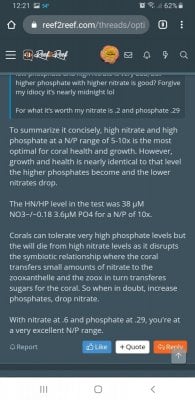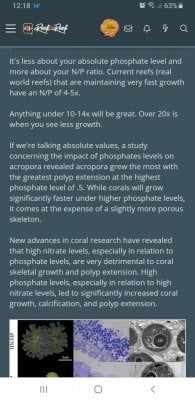I appreciate all the suggestions and encouragement. It’s nice to hear you think the corals don’t look bad. It’s that anxious voice in your head: “why are they paler? Why don’t I see polyps? What is wrong?”
I‘m also glad that the suggestions are things that are already on my mind.
I‘m leaning towards a cause of either of two things: too much light or metals. But I am definitely open to other ideas & suggestions. I am going to cut back my lights to give everything a break for now, and wait on those icp results to inform how I next proceed.
fwiw I have started using Brightwell CoralAmino (begun at three weeks ago). I also added an order of pods and phyto then (my SIL went to AlgaeBarn for my Christmas present). I’ll look into trace elements but not do anything until the icp results.
feel free to get me other ideas
I‘m also glad that the suggestions are things that are already on my mind.
I‘m leaning towards a cause of either of two things: too much light or metals. But I am definitely open to other ideas & suggestions. I am going to cut back my lights to give everything a break for now, and wait on those icp results to inform how I next proceed.
fwiw I have started using Brightwell CoralAmino (begun at three weeks ago). I also added an order of pods and phyto then (my SIL went to AlgaeBarn for my Christmas present). I’ll look into trace elements but not do anything until the icp results.
feel free to get me other ideas























